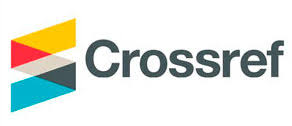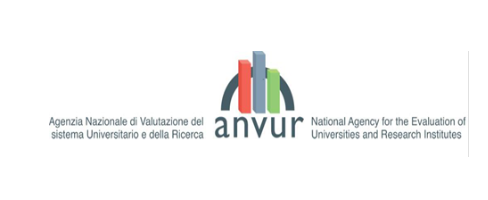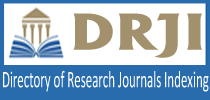SOCIAL INTEGRATION OF MOLDOVAN MIGRANT’S CHILDREN IN ITALY
DOI:
https://doi.org/10.36004/nier.es.2022.2-07Keywords:
international migration, educational integration, children of immigrants, Moldovan migrants, second generationsAbstract
The article explores the features of the Moldovan migrant's children integration in Italy and the dynamics and particularities of the second-generation formation. The study is based on statistical data analysis on the Moldovan communities of immigrants in Italy and the integration of migrant children into educational institutions. The risk factors of social adaptation of children of Moldovan migrants based on the sociological quantitative and qualitative research conducted in 2015-2019 are analyzed. The study results show that the children of Moldovan migrants face difficulties integrating into Italian society, even though they have more opportunities than their parents. There are specific differences in children's integration depending on the age of arrival in Italy, the success in learning the Italian language, the type of family (full or single parent, mixed family), and the intensity of social contacts. Children of migrants born in Italy do not experience significant difficulties in social integration, primarily thanks to their knowledge of the Italian language. Children from mixed families where one of the parents is an Italian citizen also do not have a problem. The most significant difficulties are encountered by young people who arrived in Italy as teenagers and have lived in Moldova for a long time with other relatives since their parents moved abroad for work. The need to reunite with the family after 5-10 years of separation from parents, sometimes with a new mixt family, creates additional psychological and sociocultural barriers in the process of integrating children in Italy.
Downloads
References
Ambrosetti, E., Bettin, G., Cela, E., & Paparusso, A. (2022). Subjective well-being and school outcomes among children of immigrants and natives in Italy. Population, Space and Place. https://doi.org/10.1002/psp.2639
Artero, M., & Ambrosini, M. (2022). Citizenship beyond the normative script: young immigrants’ volunteering as a practice of ‘citizenship from below’. Citizenship Studies, 26(2), 203-220. https://doi.org/10.1080/13621025.2022.2053504
Bertozzi, R. (2016). Transizioni e scelte formative. Opportunità per gli allievi stranieri nelle diverse aree territoriali. In: Santagati, M., Ongini, V., Alunni con cittadinanza non-italiana. La scuola multiculturale nei contesti locali. Rapporto nazionale a.s. 2014/2015, 1. Milano: Fondazione ISMU e MIUR, 81-108. https://iris.unimore.it/handle/11380/1103393?mode=complete
Bohman, A., Hjerm, M., & Eger, M. (2019). Politics and Prejudice: How Political Discussion With Peers Is Related to Attitudes About Immigrants During Adolescence. Frontiers in Sociology, 4, 1-11. https://doi.org/10.3389/fsoc.2019.00070
Bolzman, C., Bernardi, L., & Le Goff, J. M. (2017). Situating Children of Migrants across Borders and Origins: a Methodological Overview (Vol. 7, pp. 1-21). Springer: Life Course Research and Social Policies. https://doi.org/10.1007/978-94-024-1141-6_1
Bozhkov, O. B., Ignatova, S. N. (2020) Processes of migration and social memory of generations, Labirint, 1, 6-16. https://izvestiapolit.isu.ru/en/page/spec_list (In Russ.)
Bozzetti, A. (2019). Gender gap among second-generation students in higher education: the Italian case. In: Bonifacio, G. (Ed.), Global Youth Migration and Gendered Modalities (pp. 195-218). https://doi.org/10.1332/policypress/9781447340195.003.0011
Cavicchiolo, E., Manganelli, S., Bianchi, D., Biasi, V., Lucidi, F., Girelli, L., Cozzolino, M., & Alivernini, F. (2020). Social inclusion of immigrant children at school: The impact of group, family and individual characteristics, and the role of proficiency in the national language. International Journal of Inclusive Education, 27(2), 146-166. https://doi.org/10.1080/13603116.2020.1831628
Collyer, M., Hinger, S. & Schweitzer, R. (2020). Politics of (Dis) Integration – An Introduction. In: Hinger, S., Schweitzer, R. (Eds), Politics of (Dis) Integration. IMISCOE Research Series. Springer, Cham. https://doi.org/10.1007/978-3-030-25089-8_1
Colombo, E., & Rebughini, P. (2012). Children of immigrants in a Globalized World. A generational experience. London: Palgrave Macmillan. https://doi.org/10.1057/9781137005298
Crul, M., Schneider, J., & Lelie, F. (2012). The European second generation compared: Does the integration context matter? Imiscoe Research, Amsterdam: Amsterdam University Press. https://doi.org/10.1515/9789048516926
Di Bartolomeo, A., Bonifazi, C., & Strozza, S. (2017). Figli degli immigrati e riuscita scolastica. In: Bonifazi, C., Migrazioni e integrazioni nell’Italia di oggi. 171-182. Rome: CNR.
Engzell, P. (2019). Aspiration squeeze: The struggle of children to positively selected immigrants. Sociology of Education, 92(1), 83-103. https://doi.org/10.1177/0038040718822573
Feliciano, C., & Lanuza, Y. R. (2016). The immigrant advantage in adolescent educational expectations. International Migration Review, 50(3), 758-792. https://doi.org/10.1111/imre.12183
Feliciano, C., & Lanuza, Y. R. (2017). An immigrant paradox? Contextual attainment and intergenerational educational mobility. American Sociological Review, 82(1), 211-241. https://doi.org/10.1177/0003122416684777
Gabrielli, G., & Impicciatore, R. (2022). Breaking down the barriers: educational paths, labour market outcomes and wellbeing of children of immigrants. Journal of Ethnic and Migration Studies, 48(10), 2305-2323. https://doi.org/10.1080/1369183X.2021.1935655
Gagauz, O., Buciuceanu-Vrabie, M., Pahomii, I., Stirba, V., Tabac, T., & Grigoras, E. (2021). Populația Republicii Moldova la 30 de ani de independență: provocări principale și politici necesare. Chişinău: INCE. https://doi.org/10.36004/nier.ccd.2021.978-9975-89-248-3
Giovinazzi, F., & Cocchi, D. (2022). Social Integration of Second Generation Students in the Italian School System. Social Indicators Research 160(1), 287-307. https://doi.org/10.1007/s11205-021-02801-9
Istituto Nazionale di Statistica (ISTAT). (2020). Identità e percorsi di integrazione delle seconde generazioni in Italia. Roma. https://www.istat.it/it/archivio/240930
Mantovani, D., Gasperoni, G., & Albertini, M. (2018). Higher education beliefs and intentions among immigrant-origin students in Italy. Etnicities, 18(4), 603-626. https://doi.org/10.1177/1468796818777549
Marchetti, S., & Venturini, A. (2014). Mothers and grandmothers on the move: Labour mobility and the household strategies of Moldovan and Ukrainian migrant women in Italy. International migration, 52, 5, 111-126. https://doi.org/10.1111/imig.12131
Ministero del Lavoro e delle Politiche Sociali. (MLSP) (2022). La comunità moldava in Italia 2021. Rapporto annuale sulla presenza dei migranti. https://integrazionemigranti.gov.it/it-it/Dettaglio-ricerca/id/1112/La-comunita-moldava-in-Italia
MIUR. (2022). Gli alunni con cittadinanza non-italiana. A.S. 2020-2021. https://www.miur.gov.it/pubblicazioni/-/asset_publisher/6Ya1FS4E4QJw/content/gli-alunni-con-cittadinanza-non-italiana-a-s-2020-2021
Mukomel, V. I., (2013). Features of Adaptation and Integration of Migrants’ Children, Representatives of ,,One-and-a-half Generation” The Bulletin of Irkutsk State University. Series Political Science and Religion Studies, 2 (11), 192-209. https://izvestiapolit.isu.ru/en/page/spec_list (In Russ.)
Poalelungi, O. (2012). Particularităţi de integrare socială a copiilor imigranţilor moldoveni în ţara gazdă: cazul Italia. Revista de Filozofie, Sociologie şi Ştiinţe Politice, 2, 142-152. https://ibn.idsi.md/ro/vizualizare_articol/19035
Ricucci, R. (2022). Where Is My Place? The Second Generation in Italy as a New Kind of Transnational Migrant. Central and Eastern European Migration Review, 11, 2, 137-154. https://doi.org/10.54667/ceemr.2022.15
Santagati, M., & Colussi, E. (2021). Alunni con background migratorio in Italia. Generazioni competenti. Rapporto ISMU, nr. 3. Milano. https://publicatt.unicatt.it/handle/10807/215326
Tabac, T., & Gagauz, O. (2020). Migration from Moldova: Trajectories and Implications for the Country of Origin. In: Denisenko, M., Strozza, S., Light, M. (Eds), Migration from the Newly Independent States. Societies and Political Orders in Transition. 143-168. Springer, Cham. https://doi.org/10.1007/978-3-030-36075-7_7
Triventi, M., Vlach, E., & Pini, E. (2022). Understanding why immigrant children underperform: evidence from Italian compulsory education. Journal of Ethnic and Migration Studies, 48(10), 2324-2346. https://doi.org/10.1080/1369183X.2021.1935656















